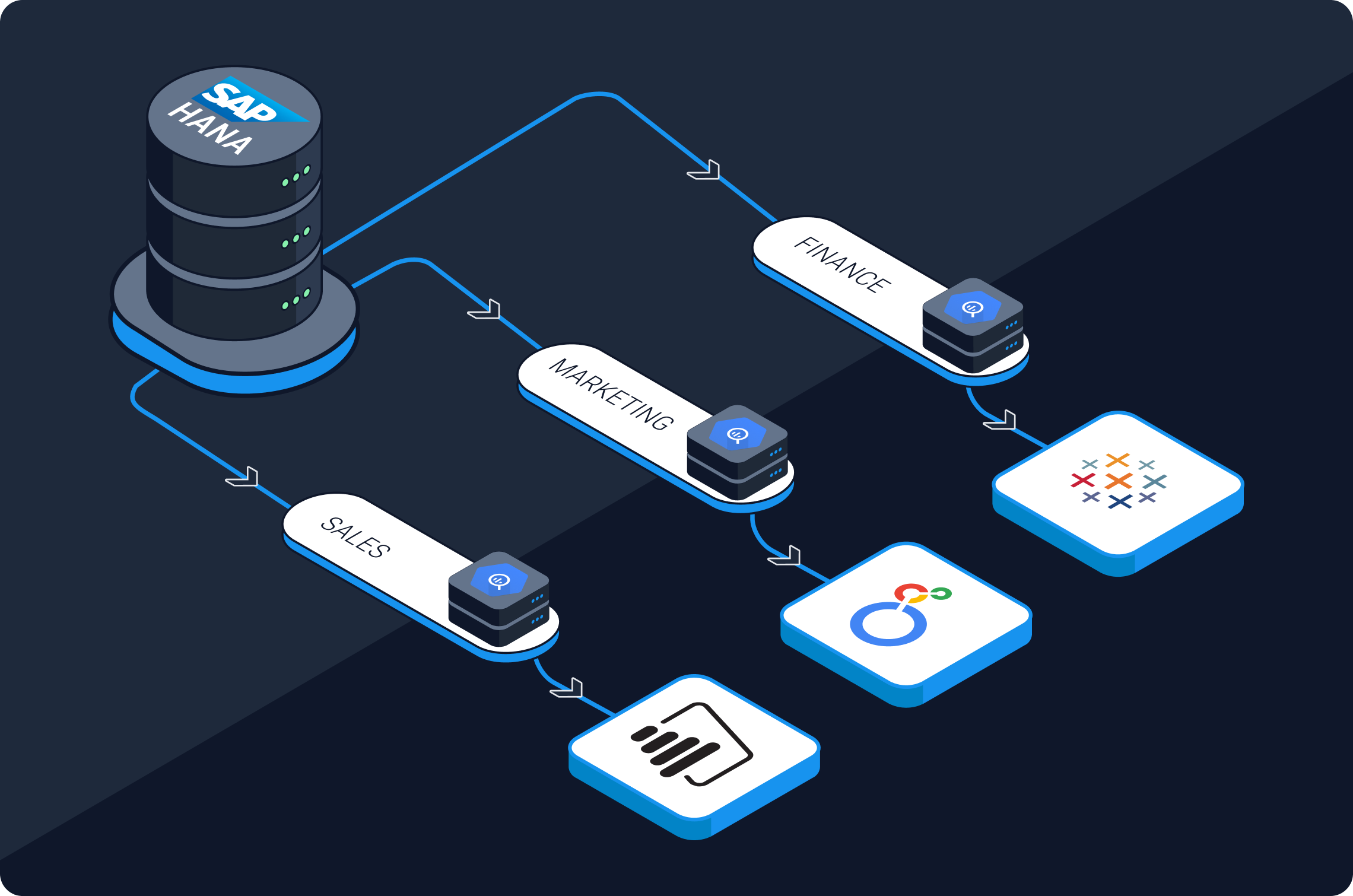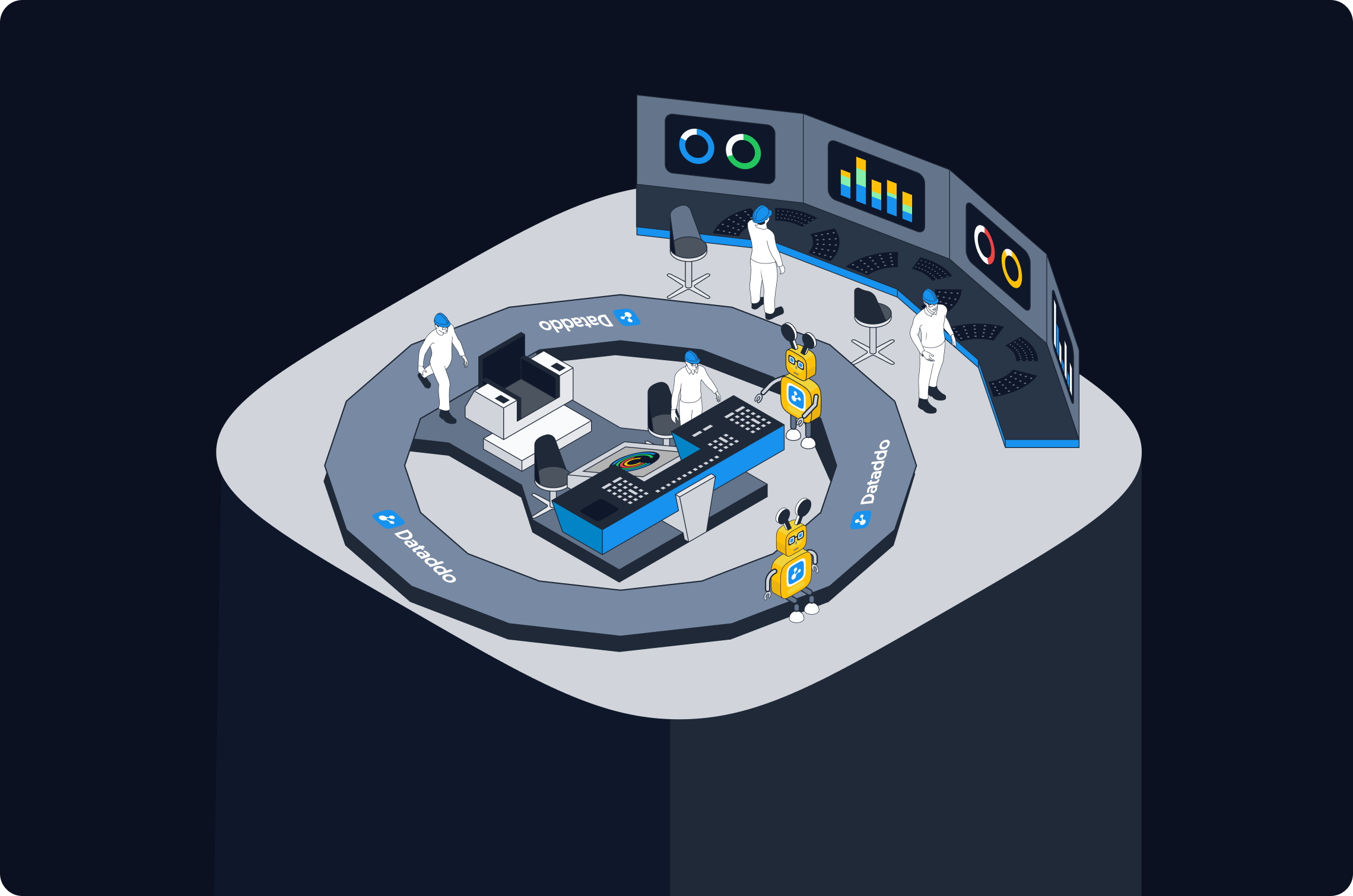It’s difficult to find a data integration tool that’ll meet your current and future integration needs. Most vendors either don’t support all core integration types, won’t build new connectors on request, and/or have pricing that doesn’t scale well.
All of these factors are blockers to successful, long-term implementation of data initiatives.
Thankfully, there’s at least one future-proof solution: Dataddo.
Dataddo is a flexible, end-to-end data integration platform that seamlessly fits into your existing data architecture, allowing you to integrate data from any source to any destination, for a predictable price. It will enable your organization to modify its data architecture without worrying about switching integration tools, and fulfill the data needs of departments across the organization, regardless of the other business tools they use.
Here's an Example of How Dataddo Works:
Imagine a large enterprise company that heavily relies on SAP HANA as its primary database system. The company deals with vast amounts of data and requires seamless integration between SAP HANA and various other data sources for analytics, reporting, and business intelligence.
The data team needs to send data to various dashboards for various departments to create weekly reports. The marketing department uses social media, paid advertising, and web analytics tools such as LinkedIn and Google Analytics. The sales department uses the highly customizable CRM Salesforce. And, the database manager has recently been tasked with setting up reporting databases for each department to help improve query performance in their main SAP HANA database.
The company requires that any new tool meet the following requirements, so as to minimize costs and optimize productivity:
- Out-of-the-box SAP HANA and Google BigQuery connectors, as well as a large library of connectors for marketing and sales tools.
- Ability to scale (i.e. handle a greater throughput of data) without becoming unaffordable.
- Flexibility to adapt to changing data architectures.
- One tool for the integration needs of every department.
The company tasks one of its data engineers—let’s call her Sarah—with trying out Dataddo to see if it meets these requirements.
SAP HANA, ETL, & Database Replication
After signing up for a free trial, Sarah configures Dataddo to connect all the company’s off- and online tools to SAP HANA, ensuring that all business-critical data is being funneled to one central location.
Furthermore, to keep this central location from becoming a data silo itself, she sets up more pipelines to replicate over 10,000,000 rows of data from SAP HANA to instances of BigQuery for each department; she then connects data from these BigQuery instances to Power BI and Tableau dashboards for their respective departments.

Database replication enhances data availability and reliability across teams by giving every department access to the data they need in their own database. This way, Sarah and her database manager don’t need to worry about non-data teams disrupting their operational database.
Reverse ETL & a Vast Connector Library
Power BI and Tableau dashboards are nice for boardroom talks and decision-making sessions, but what about line-of-business sales professionals and marketers who spend most of their time using other tools?
To help them, Sarah configures reverse ETL pipelines to push data back into Salesforce, giving the sales team direct access to freshly computed customer insights. In the same way and for the performance marketing team, she pushes offline customer conversion data back into Google Ads, enabling it to automatically hyper-target relevant prospects with zero delay.
To help the product management team, she also wants to use reverse ETL to push first-party data from SAP HANA into the in-app messaging system Intercom, so she can send timely communications to users of one of the company’s apps. But, she sees that Dataddo doesn’t have an Intercom connector. So, she notifies her account manager, who has Dataddo’s developers build one for her in 2 weeks, free of charge.
Extracting Logs for Monitoring
After Sarah sets up pipelines for every department, she and her data team need to ensure that those pipelines are running smoothly and that data quality isn’t being compromised.
So, she extracts the logs from Dataddo to monitor all of her data pipelines easily from her own dashboard. This enhances her ability to quickly troubleshoot any errors or broken flows, which, in turn, increases data quality across the organization.
Why Dataddo? All Integrations Under One Roof
As the enterprise company grows, advanced capabilities like reverse ETL and database replication make Dataddo crucial for managing and optimizing enterprise data integration processes. Sarah leverages Dataddo's flexibility to adapt to new data sources, modify integration workflows, and rest easy knowing that Dataddo can handle any increase in monthly rows extracted, without increasing the price.
|
One Tool for All Your Integration Needs Sign up for a free trial to see for yourself. |




Comments